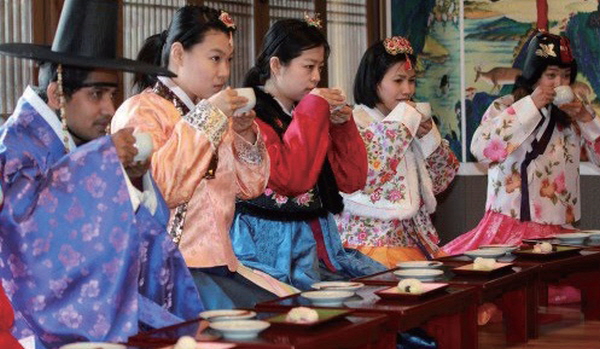FRANCE
Don’t Forget the Spirit of the French Revolution

“We've been too concerned about identity of new arrivals, not enough about identity of country receiving them“ is a quote by the first French president of immigrant background, Nicolas Sarkozy. As the quote indicates, France has changed; it once practiced tolerance. Since its formation, France has been a crossway of diverse religions, cultures, and ethnic groups. Accordingly, France implemented policies of tolerance for language, education, and social security. In French schools, special classes for children of multicultural backgrounds and children of illegal aliens operate. However, as immigrant riots from Maghrib show, there is an increased number of neglected classes of immigrant people, which fosters a skeptical perspective on tolerance policy. According to Yonhap News, the survey revealed 70% of French citizens think there are too many foreigners in France, and some of them blame the recent unemployment problem on them. What’s more, the government has implemented a stricter stance against them, planning measures that regulate the influx of immigrants. Surely when policy goes again the nation’s ideals, it threatens national security however, there is some distance between current movement and the spirit of the French revolution: liberty, equality, and benevolence. When reconsidering its boastful historical heritage, France must lead its citizens to find the right direction.
REPUBLIC OF KOREA
Demolishing Racial Barriers

Nine-year-old boy, Hwang Minwoo, widely known as little Psy, has suffered from malicious Internet postings for the sole reason he is from a multicultural family. Similar incidents obviously show the immature state of Korea’s multicultural society. The government believes the population of foreign immigrants will account for over 5% of the population in 2020 with the current rate at about 2.5%. Recently, a Filipino politician was nominated as a member of the National Assembly, international marriages have become more commonplace, and it is easy to find foreigners appearing on TV entertainment programs. Despite the increased presence of foreign immigrants, Korean society isn’t yet ready to accept diversity. Traditionally, Koreans are proud of their homogeneous country and the nation also emphases this. However, the UN Committee on the Elimination of Racial Discrimination expressed deep concern about Korea’s concept of being a homogenous nation, so people inside and outside of Korea criticized Korea. North Korean refugees suffer from a sense of indifference, international marriage migrant women are exposed to domestic violence, and children in multi-ethnic families are discriminated against, which increases poverty. However, multiculturalism is an irreversible trend. Rather than requiring assimilation, it is important to embrace immigrants and their culture. For instance, it is vital for university students to operate mentoring programs for children from multicultural families.
CANADA
A Mosaic Society where Multiculturalism Blossoms

Canada founded its principles on multiculturalism and is a good role model of multiculturalism. The Canadian government considers immigrant cultures so immigrants are free to use the language of their home country. People living in Canada, who do not use English as their primary language, comprise 40 percent of the nation’s total population. 80 percent of the population is bilingual with French, and many of them are descendants of immigrants from France. Canada does not impose strict use of the English language. For example, seven times that of the Korean Peninsula, the province of Quebec uses French and maintains French traditions. Canada harmonizes the cultures of the United Kingdom and France by embracing cultural diversity. In recent years, there has been an increased influx of Asians, so there are large numbers of people that use Chinese. Immigrants' countries such as the United States, Canada and Australia face racial or cross-cultural conflicts and social problems. However, this does not occur in Canada. The reason that there are few conflicts among people of other cultures and languages is that the Canadian government educates against prejudice and discrimination and controls it through the law. If a student humbles a particular race, the student is suspended or transferred to another school. Like this, Canada is very strict when it comes to prejudice and discrimination. On the other hand, due to the influx of many immigrants, Canada's color may be lost. With its variety of colors, Canada easily loses its original color. Canada may be losing its original color for a variety of fresh colors, but it is succeeding in accomplishing harmony.
AUSTRALIA
Enjoy the Harmony Day

Australia, began its history of immigration from a British settlement in 1788. For growth in Australia's economy, its government promoted immigration. However, atrophy of the Australian labor market has caused citizens of immigrants to feel resentment and the government passed a White Australia Policy. Interestingly, after the World War, Australia needed immigrants to increase its population and for economic revival. This historic policy in Australia led to the current multi-ethnicity, roughly two hundred different ethnicities coexistence in a multicultural society. About 43% of Australia's population was born outside of Australia or are immigrants, so the Australian Government is taking a leading position about widening its multiculturalism policy. In order to better implement multicultural policies, the government has a three tear strategy: living in harmony, fairer government services, and productive diversity. Also, to help immigrants settle down and maintain stability of each state, the Ethnic Affairs Commissions Migrant Resources Center was founded. On March 21st, the federal government hosts ‘Harmony Day’ to promote various cultural events organized by minority communities so that all peoples can live in harmony and be actively supported. Yet, limitations still exist. Cultural representation in Australia is only allowed to the extent permitted by the judicial system and policies are based on the White Australia Policy. It is more important for citizens to be treated fairly without discrimination in real daily life. The gap between mainstream society and minority communities in Australia needs addressing in regard to the limitations.
* A coined term formed from ‘beautiful’ and ‘different’ meaning differences among people make society beautiful.


